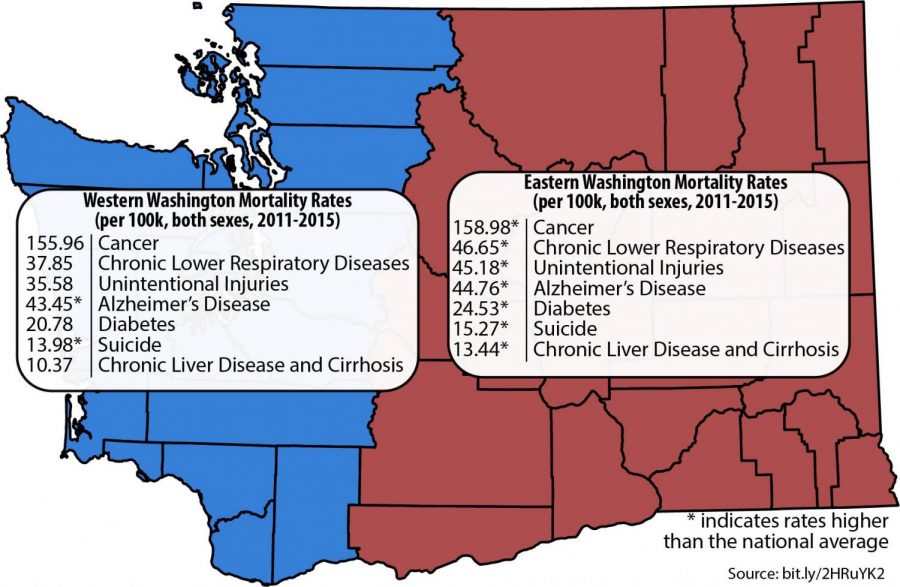Study shows high eastern WA mortality rates
Findings in interactive heat map, age-adjusted to bring focus, includes every county in Washington
OLIVER MCKENNA | THE DAILY EVERGREEN
Jonathan Espenschied, associate dean and co-author of the study, said six out of the 10 causes of death rates are higher in eastern Washington. Per 100,000 people, the average rate for Alzheimer’s disease in eastern Washington is 44.76 and is 29.40 on the national level.
February 6, 2019
WSU researchers in the Elson S. Floyd College of Medicine have discovered that mortality rates in 10 of the 11 most common causes of death are higher in eastern Washington than western.
Residents in eastern Washington were more likely to die from: cancer, heart disease, Alzheimer’s disease, unintentional injuries, chronic lower respiratory diseases, cerebrovascular diseases, diabetes, suicide, chronic liver disease, cirrhosis and the flu, according to the Eastern Washington Health Profile report.
Jonathan Espenschied, associate dean and co-author of the study, said overdose is the one cause of death that is not higher in the east.
Espenschied said six out of the 10 causes of death rates in eastern Washington are higher than the national average. For example, the national average per 100,000 people for Alzheimer’s disease is 29.40, but the average is 44.76 in eastern Washington.
Before developing residency and fellowship programs associated with the college of medicine, Espenschied said this study is a way to look at where the state of Washington stands in regard to health.
“We didn’t expect to see a difference first off,” he said, “but in some of the areas there is quite a bit more difference than others.”
Espenschied said they released their findings along with a report that includes an interactive heat map of every county in the state, showing mortality rates. The report was age-adjusted to exclude deaths of the very young and old to focus on more relevant data.
He said he thinks the differences between the regions have multi-factorial causes including socioeconomic status, access to care, the environment and education.
“All of these play a role in improving the health of our community,” Espenschied said.
Ofer Amram, assistant professor and study co-author, said he wants the public to know the team wants to improve health in communities, but before that, it is important to locate areas in need.
“We want the public to be aware, with particular focus on Washington state and the eastern side, where health disparities occur,” Amram said.
He also speculated that the discrepancies might be because eastern Washington has smaller and more isolated communities that have less access to health care.
Solmaz Amiri, postdoctoral research associate, and Anna Crowley, undergraduate research assistant, were also part of the research team.
Espenschied said the next step is to figure out why there is a huge difference between the regions by conducting future reports that will examine access to care.





















